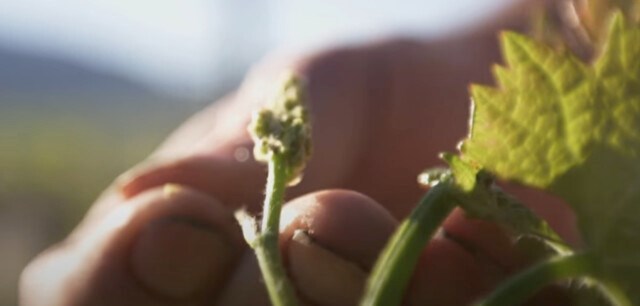Many Okanagan wine producers have made the trip to Washington and Oregon this year looking for grapes to supplement local crops devastated by last winter’s extreme cold snap.
One industry insider says they could learn a lot about adapting to climate challenges from their southern neighbours.
, the executive vice-president of operations for Andrew Peller Limited, is originally from Australia but has also worked in New Zealand and the United States. He has seen how vineyards around the world are adapting to more extreme climate conditions.
Washington vineyards adapting
McDonald suspects Okanagan growers visiting vineyards in the U.S. Pacific Northwest will be taking notes. He says you don’t have to look too much further than Washington to see how others are adapting.
“There’s going to be some replanting going on in B.C., we know that. A lot of devastation in local vineyards means we’re going to have replant,” notes McDonald.
“So, I think learning from the regions where they’re using more drought tolerant root stocks and varieties which typically fare better in the region than maybe we first through 30 years ago. So, there’ll be a bit of a replenishment of thinking in terms of root stock and variety in the valley going forward.”
Other lessons can be learned from growing regions that have been dealing with extreme heat for years.
Changing pruning, canopy management practices
“Things like pruning, canopy management, different types of regenerative farming,” explains McDonald.
He says some pruning methods are more resilient to heat and water stresses. For example, at Peller’s , north of Osoyoos Lake, they have started to use more bush vine canopy management rather than trellises.
“You give up a little bit of space but you create a much more sustainable vine by letting it grow naturally and creating more shade area. And they do that in Spain quite a bit and have been doing it like that for many, many years.”
When it comes to canopy management, he says growers used to think plucking leaves in the fruit zone was the best way to ripen grapes, but in the last four or five years, Okanagan producers have seen grapes shrivel or burn because of a lack of shade.
“So, backing that off and leaving a lot more of the fruit shaded is really critical and that’s common in Napa and Washington, where they’re getting quite warmer,” adds McDonald.
On the other end of the spectrum, some vineyards in Washington state have started leaving spurs on the bottom of vines. In the event of a catastrophic cold event, soil can be pushed over the spurs to at least protect part of the plant.
Cover crops are also gaining in popularity. For example, growing hay or clover between the rows of vines. In some cases, a new technique of hay rolling is being used to insulate the soil and retain moisture. It also gives vineyards the chance to grow another cash crop.
A cautious approach
As climate change impacts start to pile on, the biggest thing that McDonald says winemakers in the valley are doing is being cautious about what they are planting and where.
“Learning from not just the extremes of heat but also the last two years of winter events. Even some of the proposals going to government, I think industry recognizes that we need to be extremely cautious in what we plant and it should have a sustainable lens on it, not just a consumer preference lens," he said.
Andrew Peller Limited recently partnered with Australian sustainable producer Duxton Vineyards, which will launch its in Canada with a special event in Vancouver on September 26.




